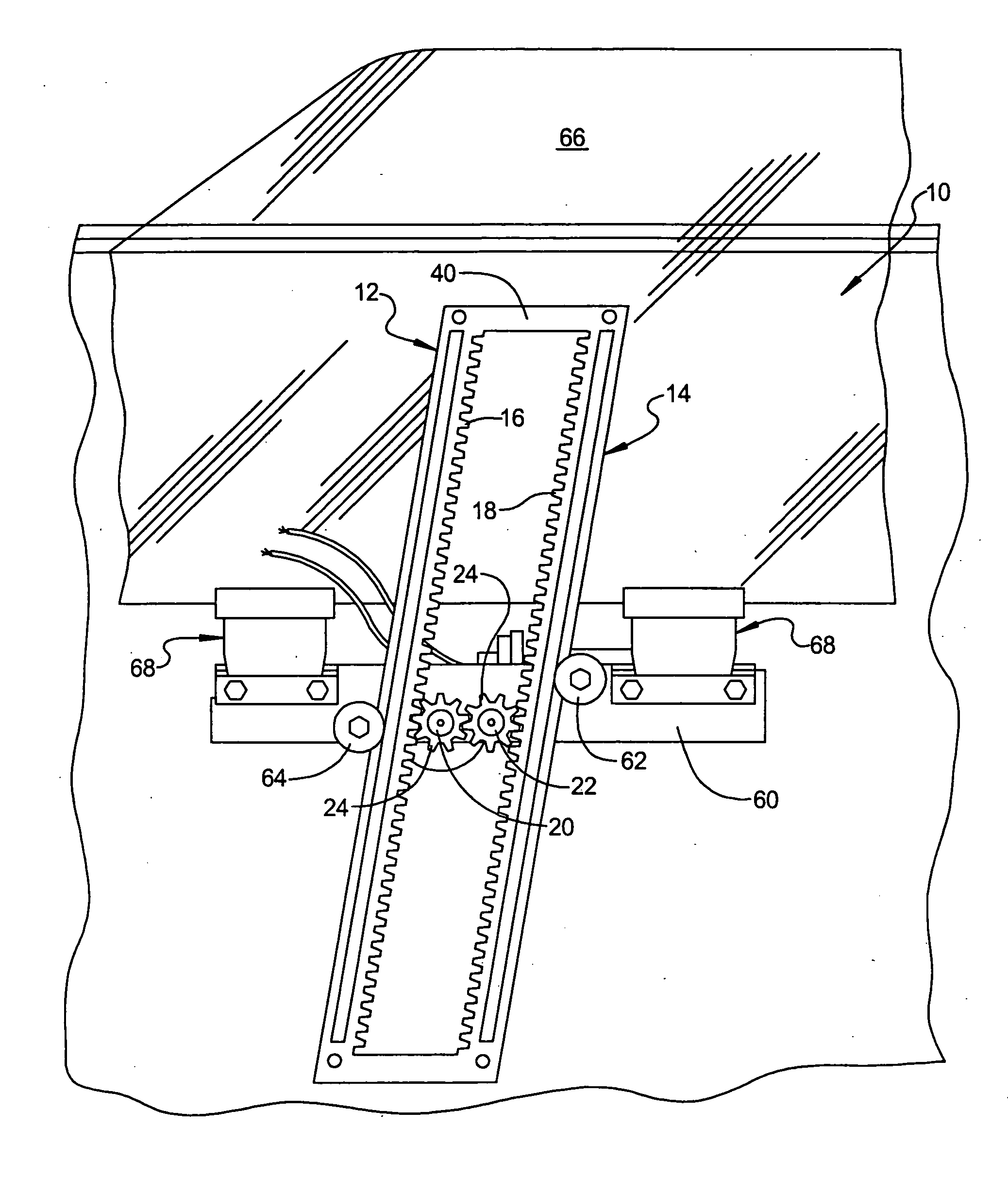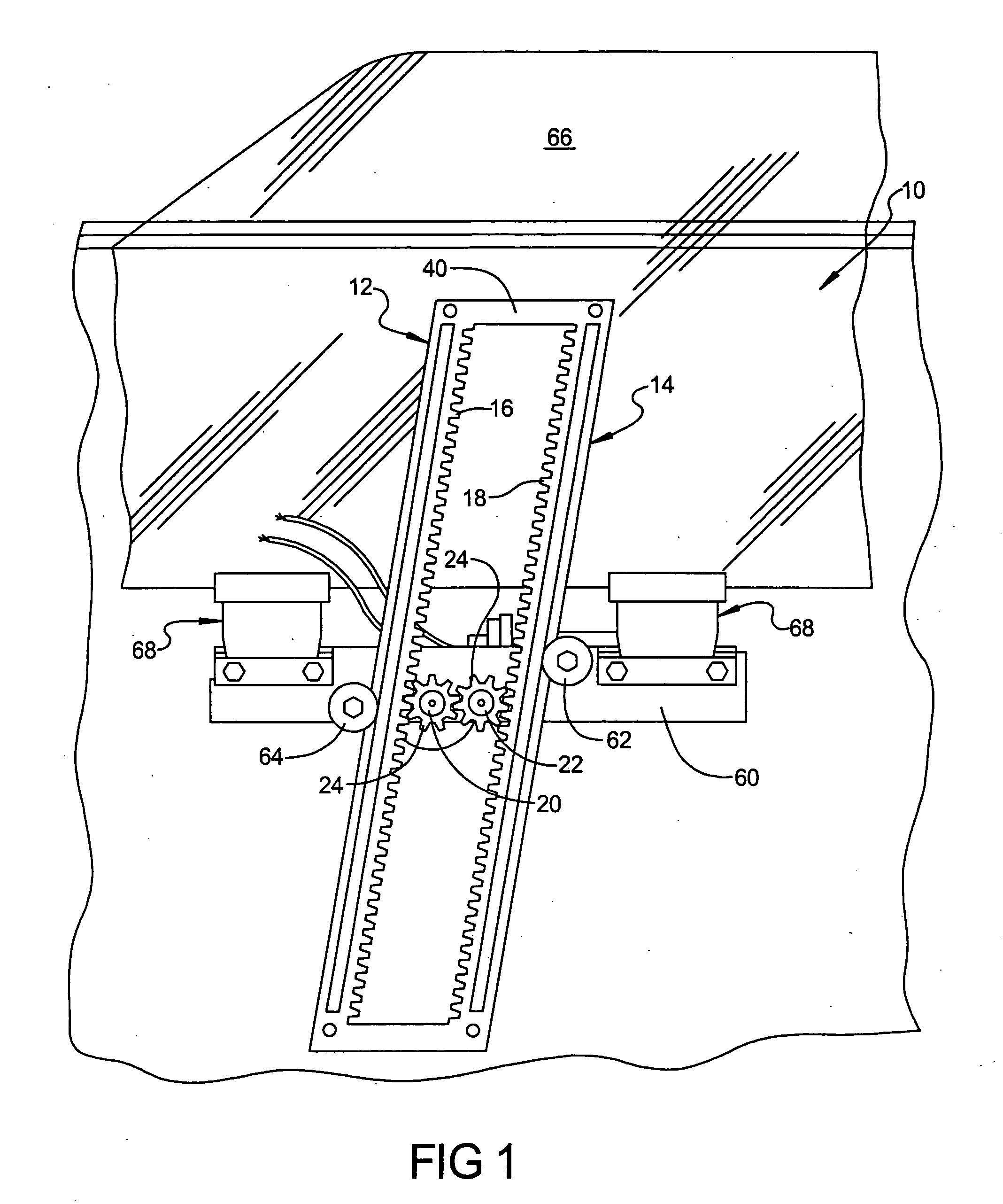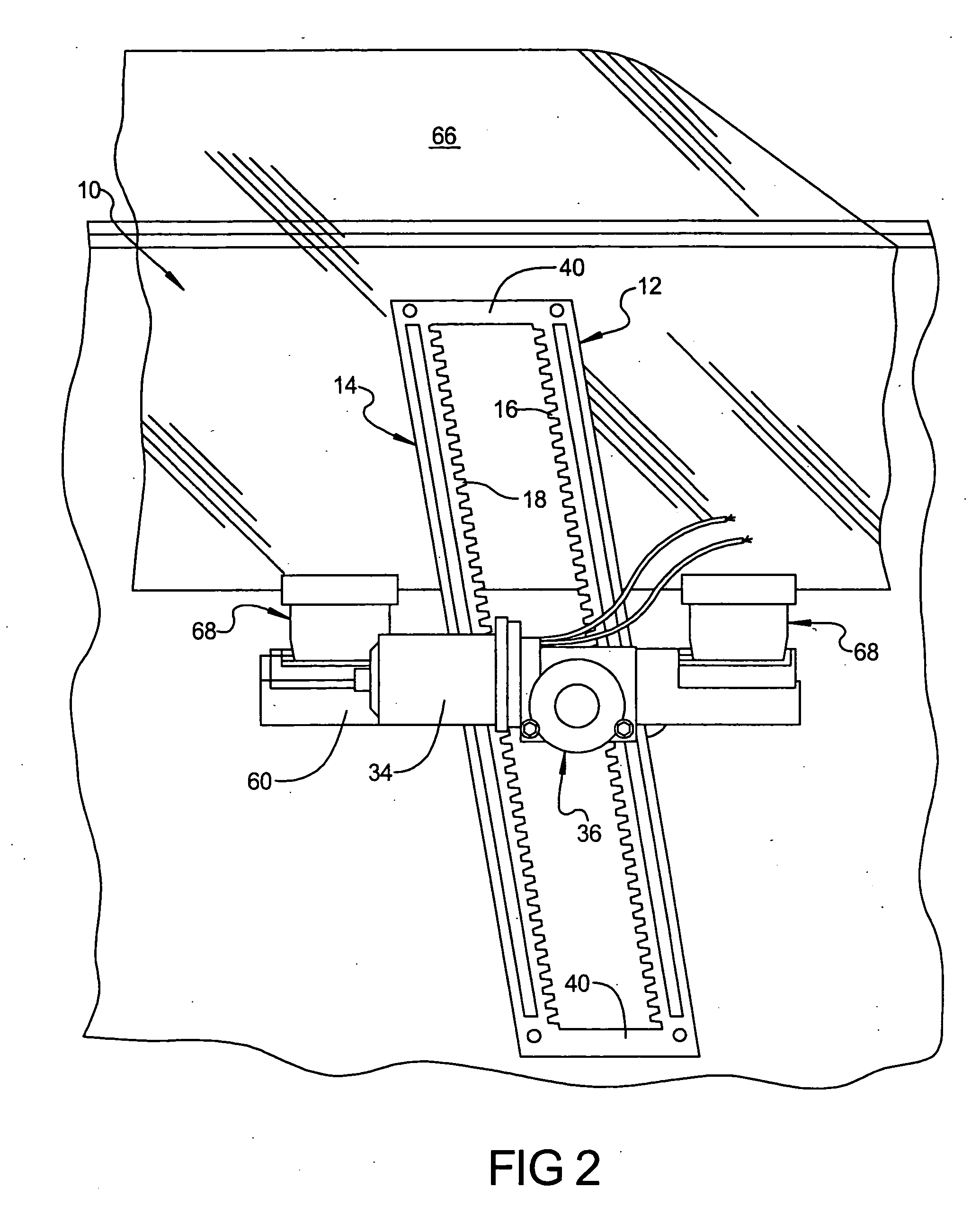Window lift mechanism
- Summary
- Abstract
- Description
- Claims
- Application Information
AI Technical Summary
Benefits of technology
Problems solved by technology
Method used
Image
Examples
Embodiment Construction
[0016] The following description of the preferred embodiment(s) is merely exemplary in nature and is in no way intended to limit the invention, its application, or uses.
[0017] With reference to FIGS. 1 and 2, a window lift mechanism 10, according to the principles of the present invention, will now be described. The window lift mechanism includes first and second racks 12, 14, each including a row of teeth 16, 18, respectively, which face toward one another. First and second pinion gears 20, 22 are also provided which include teeth 24 in engagement with the teeth 16, 18 on the first and second racks 12, 14. The first and second pinion gears 20, 22 are also in meshing engagement with one another. Specifically, the first and second racks 16, 18 are positioned closely together such that the spacing between the first and second racks 16, 18 is the minimum necessary to accommodate the first and second pinion gears 20, 22.
[0018] The pinion gear 20 is connected to a worm gear 30 as illus...
PUM
 Login to View More
Login to View More Abstract
Description
Claims
Application Information
 Login to View More
Login to View More - R&D
- Intellectual Property
- Life Sciences
- Materials
- Tech Scout
- Unparalleled Data Quality
- Higher Quality Content
- 60% Fewer Hallucinations
Browse by: Latest US Patents, China's latest patents, Technical Efficacy Thesaurus, Application Domain, Technology Topic, Popular Technical Reports.
© 2025 PatSnap. All rights reserved.Legal|Privacy policy|Modern Slavery Act Transparency Statement|Sitemap|About US| Contact US: help@patsnap.com



